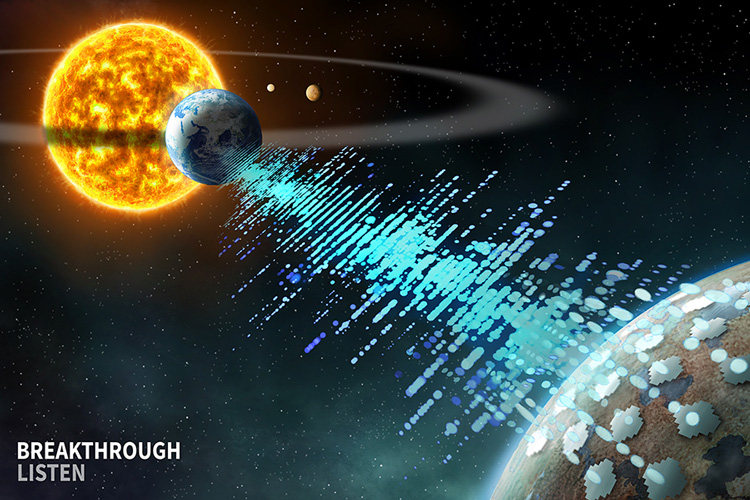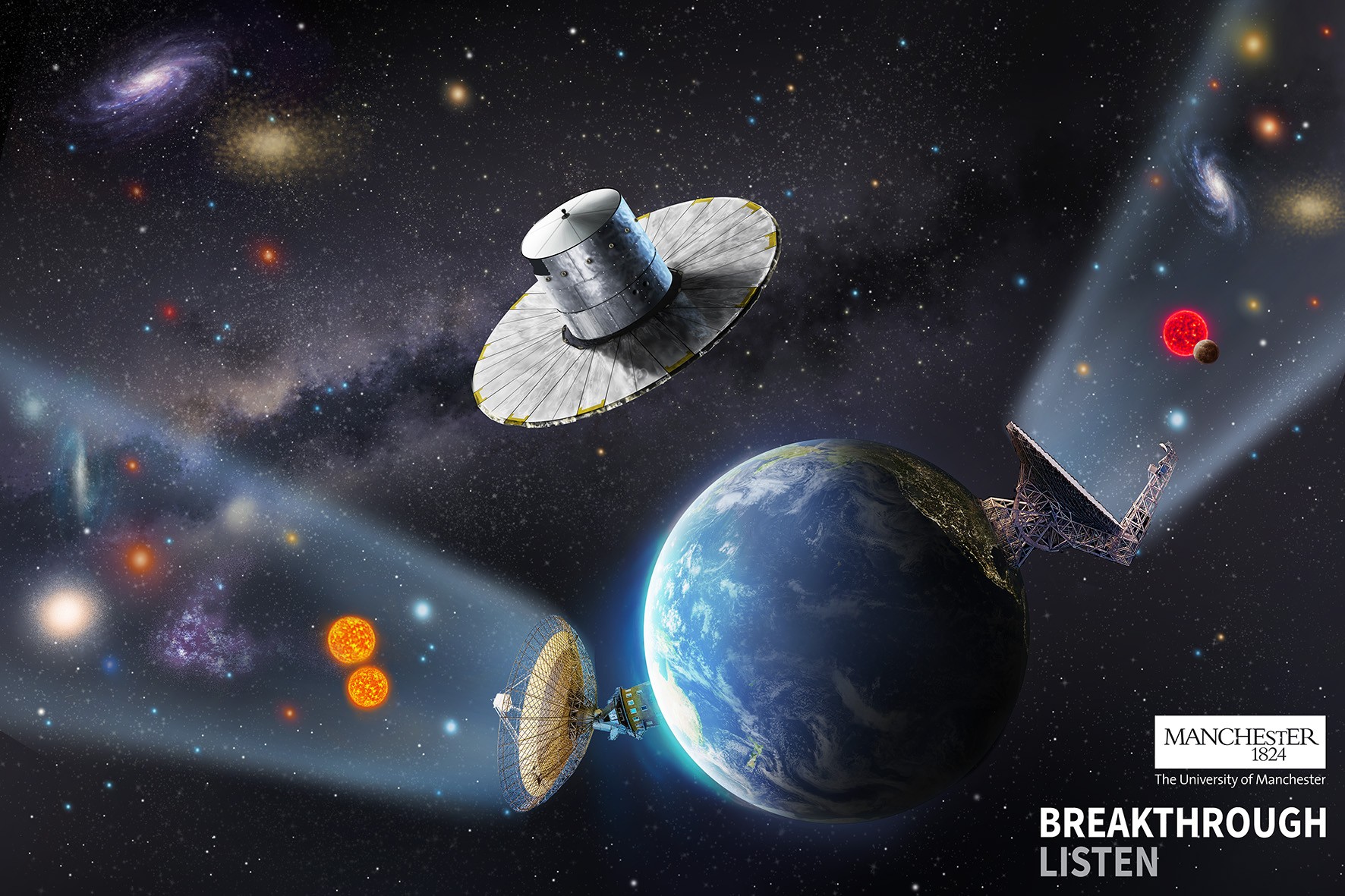In 2015, Russian-American billionaire Yuri Milner established Breakthrough Initiatives, a non-profit organization dedicated to advancing space exploration. Central to this effort is Breakthrough Listen, a ten-year international research program dedicated to the Search for Extraterrestrial Intelligence (SETI) and the largest and most sophisticated effort to find intelligent life beyond Earth to date.
In the past five years, the project has made two major data releases (in the June of 2019 and February of 2020) and announced that it found no signs of alien transmissions from the 1,327 nearest star systems. But thanks to an analytical breakthrough recently proposed by researchers from the University of Manchester, it looks as though Breakthrough Listen’s search efforts could be expanded by a factor of more than 200!
The research was conducted by Bart S. Wlodarczyk-Sroka, a postgraduate student at the University of Manchester’s Jodrell Bank Centre for Astrophysics; Michael Garrett, a professor of radio astronomy at Leiden University; and A. P. V. Siemion, the director of the UC Berkeley SETI Research Center. Their results were published in the Sept. 1st issue of The Monthly Notices of the Royal Astronomical Society.

Their team began by using data from the ESA’s Gaia spacecraft, which has spent nearly seven years cataloging the positions, distances, and motions of over 1 billion stars and astronomical objects. From this data, they selected additional stars that fell within Breakthrough Listen’s field of view, extending its reach to include stars that are up to 33,000 light-years away from Earth.
This expanded the project’s original sample by a factor of over 217, from 1,327 nearby stars to 288,315! From this vastly larger analytical sample, the research team was able to place new constraints on the potential number of extraterrestrial radio transmitters within 33,000 light-years – what SETI researchers refer to as Continuous Waveform Transmitter Rate Figures of Merit (CWTFM).
Ultimately, they found that withing 50 parsecs (163 light-years) of Earth, roughly 0.066% of stellar systems had the potential of hosting an advanced civilization capable of communicating with advanced radio technology. Within 200 parsecs (652 light-years), that number dropped to about 0.04%, reaching steadily lower the farther out they looked. As Wlodarczyk-Sroka explained in a University of Manchester press release:
“Our results help to put meaningful limits on the prevalence of transmitters comparable to what we ourselves can build using twenty first century technology. We now know that fewer than one in 1600 stars closer than about 330 light years host transmitters just a few times more powerful than the strongest radar we have here on Earth. Inhabited worlds with much more powerful transmitters than we can currently produce must be rarer still.”
This reanalysis of existing data represents a new milestone in the history of SETI. In addition to improving the constraints on nearby stars, this study also provides the first limits for more distant stars. Naturally, they stressed that any civilizations inhabiting the outer limits of the galaxy would need even more powerful radio transmitters to be detectable.
Another important takeaway from this study is the way it considered objects that lie within the range of a telescope’s field of view rather than just the target object – which is something that SETI researchers don’t usually take into account. According to Garret, this that has all changed thanks to the Gaia mission:
“Knowing the locations and distances to these additional sources, greatly improves our ability to constrain the prevalence of extraterrestrial intelligence in our own galaxy and beyond. We expect future SETI surveys to also make good use of this approach.”
Thanks to these efforts, SETI researchers now have the best limits ever produced on the prevalence of artificial radio signals in our galaxy. Granted, these results cannot place constraints on the prevalence of life itself within our local area of the galaxy. They do, however, help in narrowing the search for what is considered to be the most likely evidence of technological activity (aka. technosignatures).

In another development, Breakthrough Listen announced last year that it was teaming up with scientists from NASA’s Transiting Exoplanet Survey Satellite (TESS) mission. As per their agreement, Breakthrough Listen would be dedicating observation time with its telescopes to conduct follow-up surveys of the many new exoplanets TESS has confirmed to search for technosignatures.
More recently, Breakthrough Listen announced the release of their “Exotica catalog”, a diverse list of objects that create or are typically found in extreme environments. This catalog is now available to any and all amateur SETI researchers or citizen scientists who wish to look for signs of alien activity in what are considered to be the less-likely locales for life.
With next-generation telescopes like the James Webb and Roman Space Telescope taking to space in the next few years, astronomers anticipate another explosion in the number of exoplanets that are available for study. With ground-based observatories like the ESO’s Extremely Large Telescope (ELT) also becoming operational, they also anticipate being able to characterize exoplanet atmospheres like never before.
Combined with improved estimates on their likelihood and a wider assortment of technosignatures to work with, the search for intelligence is drawing closer and closer to resolving Fermi’s Paradox!
Further Reading: University of Manchester, MNRAS

